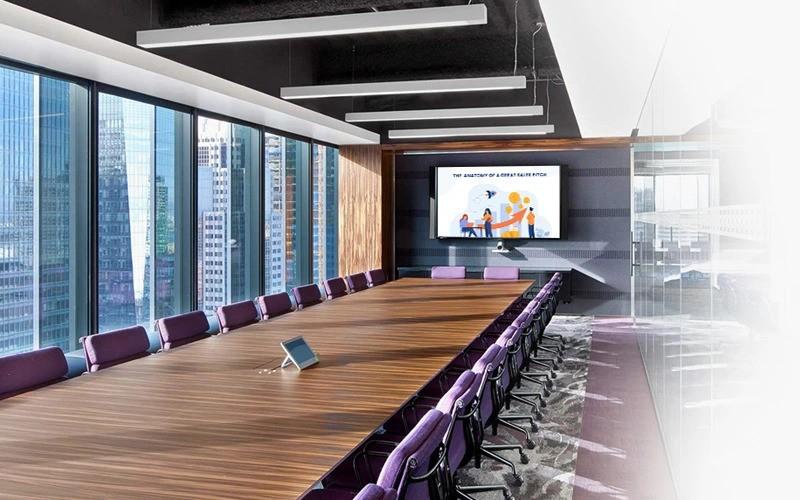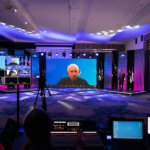In today’s world, creating effective and seamless collaboration spaces is more critical than ever. Businesses, educational institutions, and organisations of all kinds are relying on AV solutions to bring people together, whether they’re across the hall or across the globe. From audiovisual technologies that make meetings more dynamic to integrated collaboration solutions that streamline productivity, the right setup can make a world of difference. But, where do you start?
6 Best Practices for Implementing AV Collaboration Solutions
Here’s a guide to the best practices for implementing AV collaboration solutions that can transform the way your team communicates and works together.
1. Understand Your Needs First
The best place to start with AV collaboration solutions is by understanding exactly what your team needs. Not all audiovisual technologies will fit every organisation. For example, a small business might need only basic video conferencing, while a larger organisation may require a multi-room setup with interactive screens, audio systems, and digital whiteboards. Here’s where audio visual consultants can be incredibly valuable—they help to assess what works best for your specific needs.
Ask yourself: Do you need a solution primarily for meetings, training, or presentations? Do you require remote access or integration with particular software? By identifying these specifics, you’ll be able to choose the right AV solutions that align with your goals.
2. Prioritise User-Friendly Systems
While AV collaboration solutions can be complex, they shouldn’t feel that way for users. The best systems are intuitive and easy to navigate. In the rush to implement cutting-edge audiovisual technologies, it’s common to overlook usability. But if your team can’t figure out how to use a new system, it’s not going to be very effective, right?
Work with audio visual consultants to prioritise ease of use in your AV setup. An ideal system should allow people to walk into a room, press a few buttons (or better yet, one button), and start their meeting without hassle.
3. Integrate for Seamless Communication
In a world where hybrid work is becoming the norm, your AV collaboration solutions need to support remote participants as seamlessly as they do in-person attendees. The right AV solutions will integrate video conferencing, screen sharing, and content-sharing capabilities to provide a unified experience.
Look for solutions that support various conferencing platforms like Zoom, Microsoft Teams, or Google Meet, so users can connect using the tools they’re most comfortable with. Smart integration means your audiovisual technologies are working together, allowing everyone to see, hear, and collaborate on the same page, regardless of location.
4. Focus on Quality Audio and Video
When it comes to audiovisual technologies, quality is king. There’s nothing worse than sitting through a meeting where the video is choppy or the audio sounds like it’s coming from underwater. Investing in high-quality microphones, speakers, and cameras makes a big difference, especially in larger spaces.
Audio visual consultants can help determine the best setup for your room, ensuring you have the right microphones to capture clear audio and the right screens and cameras to enhance visibility. High-definition screens and strategic speaker placement can elevate the overall experience, making meetings more productive and enjoyable for everyone involved.
5. Design the Space with AV in Mind
The physical layout of your space matters just as much as the technology you install. Lighting, acoustics, and seating all play a role in creating effective AV collaboration solutions. For example, natural light is great, but too much glare can interfere with screen visibility. Similarly, hard surfaces can cause sound to echo, while soft materials can help absorb sound for better audio quality.
This is where audio visual consultants again prove invaluable. They can work with you to optimise your room’s design, ensuring your AV solutions perform at their best. From acoustic treatments to adjustable lighting, creating the right environment is crucial to maximising your investment in audiovisual technologies.
6. Plan for Scalability
Your AV collaboration solutions should be able to grow with you. Today, you might only need a simple setup, but in a few years, your needs could change significantly. Scalability is key in AV solutions—think of it as future-proofing your setup. Look for systems that can be easily upgraded or expanded, whether you’re adding new rooms, new team members, or additional capabilities.
Consider working with audio visual consultants to build a roadmap for growth. A good consultant will help you choose flexible solutions, so as your organisation’s needs evolve, your AV setup can keep pace without major overhauls.
Final Thoughts
Implementing AV collaboration solutions is all about creating a seamless, productive experience that meets your team’s unique needs. By working with audio visual consultants, focusing on user-friendly and high-quality audiovisual technologies, and planning for the future, you can design an AV setup that transforms the way your organisation collaborates.



